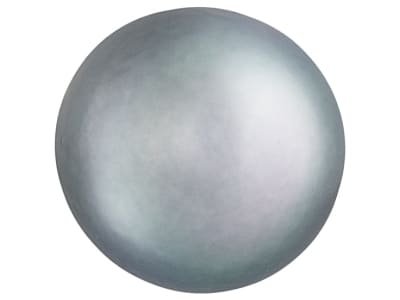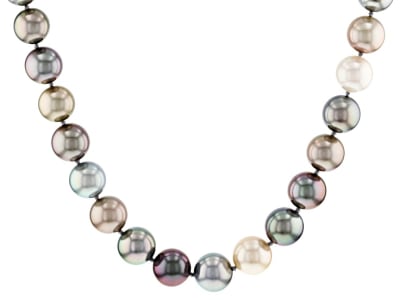Tahitian pearls are cultivated from the Pinctada margaritifera, better known as the black-lipped oyster. The designation Tahitian should only be applied to pearls cultured and harvested from the waters surrounding Tahiti and the other islands of French Polynesia. Colors can range from light gray, silver to black often with secondary overtones. Tahitian pearls can range from 8 to 17mm.
General Information
Common Name
Tahitian Pearl
Species
Pearl
Transparency
Translucent - Opaque
Refractive Index
1.530-1.685
Birefringence
0.155
Optic Character
NA
Optic Sign
NA
Polariscope Reaction
Aggregate (AGG)
Fluorescence
SWUV: Variable
LWUV: Variable
LWUV: Variable
Pleochroism
None
Hardness
2.5-4
Specific Gravity
2.720-2.780
Toughness
Good
Inclusions
Tahitian pearls have Intense luster and iridescent surface. If the pearl is drilled you can inspect the hole to look for bead nucleus.
Luster
Dull, Metallic, Pearly
Stability
Poor
Fracture
Uneven
Cleavage
None
Chemical Name
calcium carbonate + conchiolin and water
Chemical Formula
CaCO3
Crystal System
NA
Chemistry Classification
Organic
Tahitian Pearl Colors
-
 Black
Black -
 Blue
Blue -
 Brown
Brown -
 Gray
Gray -
 Green
Green -
 Multi-color
Multi-color -
 Purple
Purple
Countries of Origin
Tanzania, United Republic Of; Unknown; China; United States of America; Australia; French Polynesia
Care
Avoid cosmetics, perfumes, hairsprays, heat and household chemicals.

